Apple is radically changing the design of the Mac Pro but still plans to continue building it in the United States. That doesn't mean, however, that it can do the same for everything else it makes. Here's a look at why.
The flawgic of Apple's Chinese predicament
Apple isn't the only company building products in China but it does get an extraordinary amount of scrutiny over it, in part because it has been the most successful Western company in China. That's somewhat ironic because Apple was among the last major manufacturers to leave the U.S. for overseas production of its computers. Across the 1980s, Steve Jobs worked to build out a dream of automated factories that could build Macs right in California, using the same manufacturing processes he'd witnessed in Japan.
After Jobs left Apple in 1986, he again worked to establish an American factory in Fremont, Calif., capable of building his new NeXT machine in 1990. But building self-sufficient factories for computers in the US. proved to be disastrous. The problem wasn't the cost of American labor, as both factories were highly automated. It was the lack of any modern manufacturing culture, including the schools and apprenticeships needed to train specialized mechanical engineers.
 Steve Jobs' American factories were automated, so it wasn't expensive labor that killed them
Steve Jobs' American factories were automated, so it wasn't expensive labor that killed themApple shuttered its Mac factory in 1992, and NeXT pulled out of hardware entirely the next year. In part, what had forced both Jobs and Apple to stop attempting to build computers in America in the 1990s was the continued outsourcing of high volume PC manufacturing lead by IBM, HP, Compaq, and others, who had to shave down their costs to survive on razor-thin margins.
Their investment in Japan, Korea, Taiwan, and ultimately the Special Economic Zones that China opened up to western investment in the 1980s, helped to build not only supply chains of components feeding the factories, but also a human chain of skilled workers needed to keep the factories running.
This cycle of investment built sleepy coastal villages into massive cities such as Shenzhen, just across the border from Hong Kong. At the same time, high tech manufacturing in the U.S. grew increasingly difficult. Wages were indeed higher, but a much bigger problem than the cost of assembly-line labor was rapid, unfettered access to specialized components. And with fewer manufacturing sites, the demand for specialized tool and die maker machinists also dried up. These workers create and maintain the sophisticated machines used to shape metal, punch and drill holes, and otherwise convert raw materials into the precise shapes sketched out by designers.
Building an assembly line capable of producing millions of precision devices per week requires far more than just hiring assembly workers; those assemblers need sophisticated, custom machines to operate; staff to test, maintain and repair that equipment; and bins of hundreds of bespoke components in exacting quantities. Order too many extra and you've become unprofitable, order too few and your factory production grinds to a halt.
By the time Jobs returned to Apple in 1997, it was irrefutable that building high volume PCs in the U.S. no longer made any sense, particularly when competing against commodity PC makers building overseas. Rather than taking a third shot at setting up an American factory, Jobs recruited Tim Cook, who brought in his extensive experience in managing global supply chains, first at IBM and then at Compaq.
Before Apple could "innovate," it needed to operate. Cook's operational overhaul of Apple's existing Mac business turned Apple from an inefficient mess of warehouses sitting on aging products to a streamlined system driven by data, capable of planning well into the future, and operating at scale.
Operating at scale
In the 2000s, Apple began to shift from being a custom PC maker that mostly delegated away the work of custom component development and increasingly began to tweak the design of parts from its supply chain— in much the same way that Microsoft and Google are trying to do today. And just like Microsoft's Surface and Google's Pixel operations, Apple was producing around 4 million Macs per year, not nearly enough to drive operational economies of scale.
However, with the development of the iPod, Apple's operational savvy rapidly built out a design, manufacturing, distribution, and retail empire capable of making and selling tens of millions of units. That quite uniquely positioned Apple to jump into smartphones at a premium tier. By the end of the 2000s, Apple had fully transitioned from a custom PC maker selling just over 4 million Macs into a leading electronics maker selling more than 75 million devices annually.
That's particularly impressive when you compare it against other attempts to get into high volume hardware sales, such as Microsoft's Surface division growing from less than 4 million to just slightly more than 4 million across the 2010s, or Google's Nexus/Pixel sales growing from well, they didn't really grow at all; Pixel is still phoning it at just over 4 million, like Apple's Mac business back in 2000 when the company was written off as hopelessly irrelevant.
Across the 2010s, Apple has moved from 75 million devices to the production of a quarter-billion units per year. Apple's growth in device unit sales has come largely from sales of iPhones and iPad. Mac sales have grown, but certainly less dramatically: from around 4 million back in 2000 to just about 20 million this year.
Mac sales have also dramatically shifted in their form factor mix. In 2000, Apple sold just shy of a million notebooks and about 3.5 million desktops, 2 million of which were those bubbly translucent consumer iMacs. Ten years later, things had flipped dramatically: it was selling nine million Mac notebooks but only 4.6 million desktops, which included Xserve, Mac Pro and all of its desktop Macs. The slight increase in desktop Macs was coming entirely from iMac growth. A couple of years later, Apple stopped breaking down Mac unit sales entirely, but the trajectory was clear: desktops were waning, and sales of the high-end Mac Pro were growing scarce.
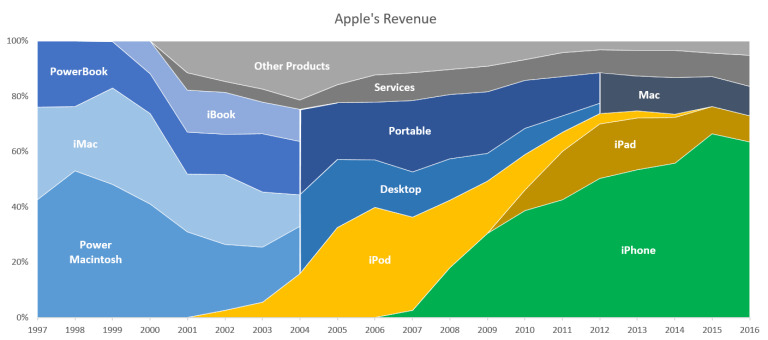 Source: Data Visualisations
Source: Data VisualisationsIncreasingly, the work devoted to designing and building new higher-end Mac desktops was becoming a labor of love, not of commercial enterprise. That's why there was a real concern that Apple might just discontinue the Mac Pro after its last update in 2012, the same way it had backed out of the Xserve market after a final update in 2009. After Jobs passed away in 2011, the fears that Apple couldn't survive without him created more uncertainty for the Mac in general. Macs were associated with Jobs, where Cook was often represented as being an iPad user of the iPhone generation.
Instead of getting out of the Pro market, Cook assured pro users that Apple would be doing something new with them in mind, which turned out to be the compact 2013 Mac Pro. Rather than being a big expandable box, it aimed at delivering a trio of fast CPU and GPUs that could attach to external PCIe expansion, storage, and displays. That Mac Pro has since been reviled by some critics as a grave mistake, but the biggest problem for it was that the potential demand for a $3,000 and up Mac desktop was incredibly small to being with.
The last official numbers for Mac desktops from Apple were provided in 2012, showing the same 4.6 million units as the previous two years— and most of those were iMacs. In contrast, Mac notebooks saw two years of double-digit growth reaching 13.5 million sales that year. So Mac Pro sales were already small as a big aluminum box, and likely only shrunk further because a lot of potential buyers were likely waiting for the 2013 Mac Pro to get its first processor upgrade and to gain modern Thunderbolt 3. That never happened.
Small batch production
In the same way that Apple needed iPod— and then iOS devices— to achieve the scale to survive and thrive, Mac Pro will need to find some expansion of capability to attract enough sales to matter. At the same time, the small production scale of Mac Pro as a product also allows Apple the capacity to build it in the U.S., offering a token to critics who don't understand why Apple can't just open an iPhone factory in Wisconsin.
It also seems pretty obvious that the new Mac Pro is also indulging in the art and craftsmanship of building a specialized product that casts a halo of technological savvy, sort of like a mainstream automaker building a low-production supercar on the side.
A previous article discussed the simplistic fallacy of Apple being merely a whim machine that survives on a diet of genius invention ideas, with the implication that it could starve to death at any moment if it fails to be "innovative enough."
Here, let's take apart another fairy tale idea: that Apple is dangerously stuck in China, that it could move assembly line jobs to the U.S. if only it cared enough, had the moral fortitude, and lacked the greed, providing good-paying jobs to unskilled workers living next to rusting American factories from the 1960s. The reality is a bit more complex.
What if Google created jobs in America?
As is often the case when wondering "what if Apple had instead...?" we have a control group in our experiment in the form of Google. That company actually did go out an buy an American manufacturer and set up phone assembly in the U.S., creating exactly the kind of modular, customized Android product that bloggers at Wired and The Verge had invented in their columns as being what consumers really want.
Google spent $12.5 billion acquiring Motorola Mobility. The subsidiary's CEO Dennis Woodside claimed at the time that "it's a myth that you can't bring manufacturing here [to the U.S.] because it's too expensive."
In 2013 Google opened its U.S. factory building the Moto X, which Steve Levy described as "the first in a series of hardware products that Google hopes will supercharge the mother company's software and services." Remember when journalists— even Apple bloggers— thought that 'Google was getting better at hardware faster than Apple is at services?" Good times!
Google's factory closed in 2014. It was not a lack of inventive ideas, or courage, or genius, or billions of dollars that determined the outcome of Google's stab at American cell phone manufacturing. It was insufficient competence in developing and implementing a feasible strategy. Google blindly ignored the realities that Apple had suffered through in the 1980s and 1990s, and decided that throwing vast amounts of cash around could fix anything.
Rather than turning a company losing hundreds of millions of dollars into a profitable operation poised to deliver new generations of technology, as Cook did with Apple in the late 1990s, Google converted a profitable American manufacturer into a money pit bleeding hundreds of millions of dollars per quarter, then gave up and sold the scrap to Lenovo.
The tech media unanimously cheered Google on through the whole thing, contrasting how bad Apple was for not doing the same thing. And after things collapsed and Google literally sent Motorola's high-value American jobs to China, writers at The Verge shrugged and called the whole thing "unfortunate," as if there had been too little lucky magic involved rather than just too much arrogant incompetence.
As if creating an observable pattern, Google later partnered with HTC to assemble the initial generations of its Pixel phones. After nearly destroying the Taiwanese company, Google acquihired nearly all of its phone engineers and delegated the design and engineering work of the value-engineered Pixel 3a to that team in Taiwan. Nobody cared that Google was not only outsourcing its phone assembly but also actively sending its more valuable design and engineering work overseas as well.
What if Apple created jobs in America?
Google was given a complete pass on incinerating double-digit billions of dollars while destroying American icon Motorola in the very same year that analysts and the media took Apple to task for spending $3 billion to acquire Beats Electronics, another American firm.
In 2014, the New York Times credited Ben Sisario, Brian X. Chen, and David Gelles with writing an article about Apple's planned acquisition, stating that Beats sold headphones "at prices of up to $450 apiece," then farcically cited unnamed "headphone designers" who "estimate the cost of making a fancy headset is as low as $14."
The astounding implication that the markup on Beats headphones was 3200% was echoed by Mark Gurman, who smirked through a Bloomberg video last year, recounting how Beats was infamous for "extremely high margins," while letting viewers in on "a little secret," that they also "weren't very good."
Gurman claimed at the time that Apple was preparing to launch its own over-ear set of headphones with noise cancelation that would have better audio quality on par with its AirPods, and that these new headphones, which he called "Studiopods," would arrive by the end of 2018 and eat up sales of Beat headphones, attributing all this news to "people familiar with the product plans."
Gurman added that "what makes this so interesting" was that Apple had paid $3 billion for Beats "just a few years ago," implying that Apple as a company was just as stupid and incompetent and directionless as he portrays it as being in every article he writes about the company. Bloomberg did not appear to fact check anything in the segment.
The problem was, Apple had six months earlier already released its Studio 3 Wireless over-ear headphone with noise cancelation, using the same W1 technology as AirPods, under its Beats brand. And rather than actively cannibalizing the brand it had just acquired to replace it with new products of its own, Apple has subsequently released Powerbeats 3 Pro, a premium-priced, sport-oriented alternative to its white AirPods, using the same new H1 chip and featuring a longer battery life— under the Beats brand.
Gurman was wrong about literally everything— not just the predicted product release, but also Apple's current lineup, its future plans, and its overall strategy— yet he was still regarded as some sort of authority because he carried along the media narrative that implies Beats are crap, Apple's acquisition was stupid, that the company can't keep anything secret, and that any fool can see the company is just a complete train wreck of incompetence and dramatic infighting.
Nobody likes to spend too much ink on it, but Apple's Beats subsidiary resulted in Apple Music, the second-largest media streaming service after Spotify, as well as the vast makeover of Apple's audio hardware across MacBooks, iPhones, and iPad. Apple spawned AirPods and HomePod and upgraded Beats' own headphones to its custom W1 and H1 silicon. All of this new business activity developed billions of dollars of value in America, creating real jobs in engineering, creative, and marketing, not just dreary minimum wage assembly line positions.
Western tech media doesn't say a word about any of this on the subject of Apple and American jobs, but they have invented a series of catastrophic buffoonery targeting AirPods, suggesting made up health risks and the fact that they wear out, can be lost and can't be refurbished by end-users.
Writing for Vice, Caroline Haskins even claimed AirPods "can't be easily recycled, because there's no safe way to separate the lithium-ion battery from the plastic shell. Instead, the AirPods sit in your drawer forever," or until you return them to Apple for free recycling, but whatever.
Yet when Google, Samsung, Amazon, Microsoft and everyone else finally showed up with their own take on AirPods, the story changed to say Apple now had scary competition, not that earbuds themselves were a threat to humans and the environment.
Apple sells 40 million AirPods alongside global sales of 1.4 billion Androids that have a similar life expectancy, generate significantly more ewaste, and really have no coherent recycling plan. But let's worry about AirPods, and only the Apple-branded ones.
These are the same people crafting the narrative of Apple in China. It's intentionally slanted, factually incorrect, outrage-inducing entertainment.
Checking off the boxes
Alongside the fallacy that Apple could mass-manufacture its mobile devices at scale in the U.S. if only it cared enough, it's also popular for tech media thinkers to suggest that Apple really just customizes commodity tech from China. This implies that any other company with a few billion dollars and good ideas can also order their own inventory of commodity tech and effortlessly be the next Apple, probably with better pricing and fewer restrictions on how things work.
Reading their work, it sounds as if it's simply a matter of checking off the correct product order options: yes to "removable battery," "headphone jack," and "side-loads apps," and definitely no to "light and thin," "butterfly keyboard," or "camera bump."
Yet if it were that easy, Amazon, Google, Microsoft, and so many other companies who actually did that across the past decade should have been able to compete with Apple in hardware and should have been able to build similarly successful businesses that make money the same way Apple does. Again, Apple's success is not fueled by smart inventions or lucky whims. It is successful because it puts incredible work and thought into competently implementing long term strategies.
Google found this out when it tried to do Apple-like work in developing its own custom Pixel Visual Core camera silicon. It's both really hard and exceedingly expensive to put that much effort into building original products that can stand out in the market. And afterward, your work faces the threat of being copied or bested by competitors.
That's a principle that tech bloggers understand in the context of Apple: there has always been lots of speculation that rivals would quickly catch up with technologies like Face ID— which they haven't yet— but almost no anticipation that Apple could match and improve upon once-exclusive Android features like Dark Mode.
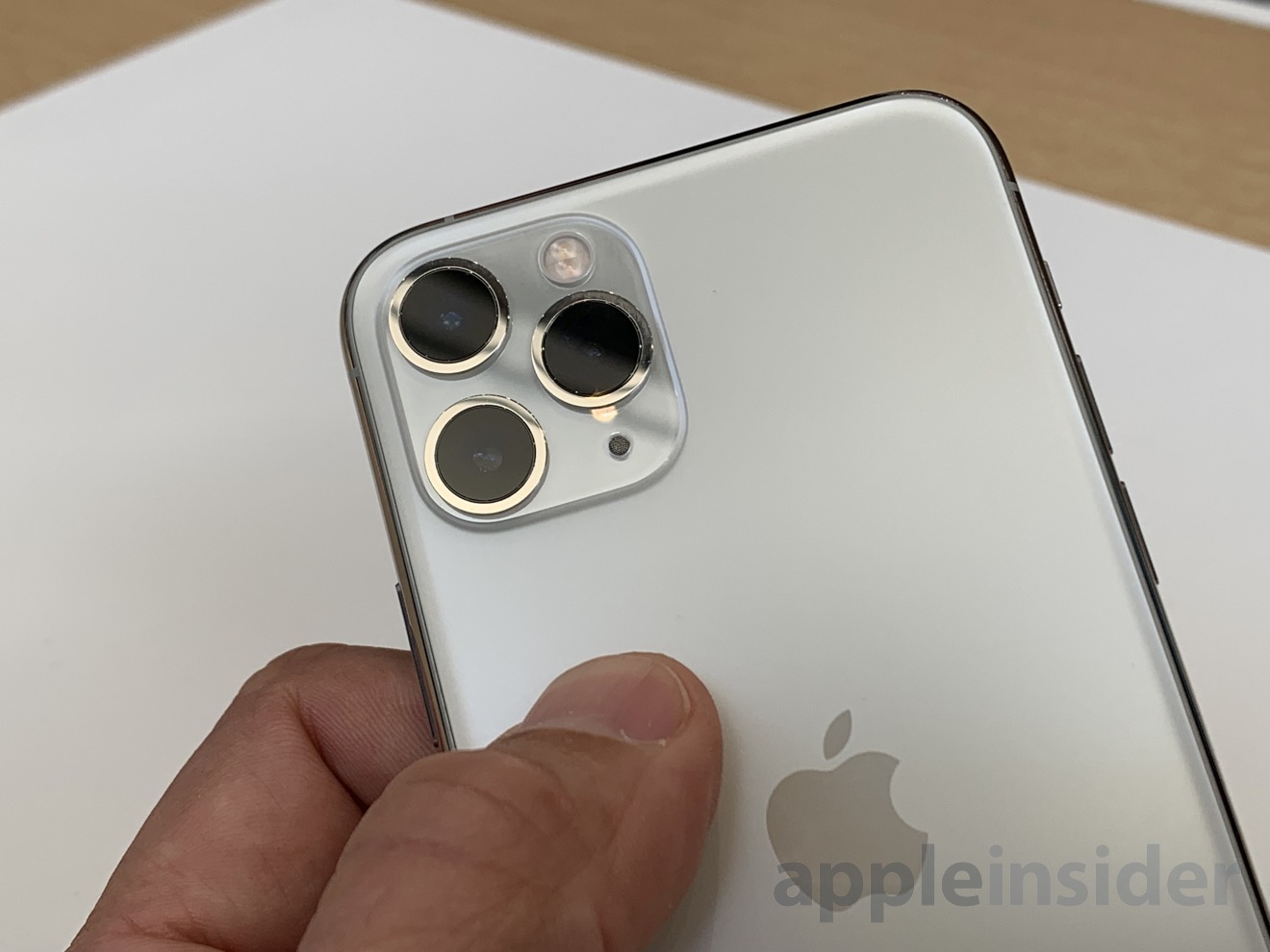 Bloggers created the impression that nobody could catch up to Google's single lens Dark Mode cameraphone
Bloggers created the impression that nobody could catch up to Google's single lens Dark Mode cameraphoneApple's expensive work in keeping its premium products differentiated is seen as a massively difficult thing to keep continuing every year, but the occasional stab at a premium feature by Google, Samsung, and others isn't seen as problematic to maintain at all, even though none of these companies can maintain a pace of innovation on par with Apple in driving profitable sales of premium devices. It appears that mainstream tech writers don't care because that doesn't fit with their narrative of Apple being perpetually on the precipice of failure.
This fallacy also suggests that companies already in China are a step ahead of the game, and can simply ship direct, including the "Apple of China," as the tech media once christened Xiaomi. The actual name of that company is an allusion to communist revolution, which is sort of the opposite of being an "Apple," but who cares.
If you ideologically believe in "invention" and discount the efforts of implementation and management, communism starts to sound magically wonderful. Tech journalists have become the forefront of defending ideological notions of "free," "open," and "decentralized community." According to the similar-sounding rhetoric of communism, the State is supposed to just go away, leaving the People to enjoy sharing everything they need for free, helping out as needed.
In reality, communist experiments invariably end up just like Android, where the original idea was a software world free and open and not under the control of one greedy company. The reality involved a lot of unanticipated costs in personal security and privacy, and pretty onerous control by an actually very necessary power structure that is desperately afraid of losing its control and works to kill any potential forks that stray away from the party.
Not invented here
Android fans also like to point out that Apple uses lots of components from Samsung and others, as if this should be a point of shame for the iPhone maker. Somehow this logic isn't also applied when noting that Samsung adopted Apple's AirPlay 2 protocol and its iTunes TV app, after failing to build any support for its own various initiatives in TV streaming and its failed attempts to sell content online, despite being the world's largest TV maker.
Earlier this year, Christopher Mims of the Wall Street Journal even spun Samsung's use of Apple technology as a groveling concession of the failure of Apple TV hardware from a desperately witless Apple struggling to "pivot" into being a media company that tricks us into paying for those ongoing subscriptions we all hate.
And of course, at the same time Apple is contrasted with the real winners in content, including Amazon Prime, Disney, Netflix and Spotify, which only delight us with those subscriptions everyone loves. Isn't it interesting how all the great minds work in one direction?
Tech observers also like to suggest that Samsung's use of ARM core reference designs is basically the same thing as Apple's architectural license used to develop its ARM ABI-compatible custom processors. Yet for a decade, Apple's Ax mobile silicon processors have increasingly outpaced the collective efforts of Samsung, Qualcomm, Nvidia, and Texas Instruments to build mobile CPUs. Apple has also delivered its own mobile GPU, which similarly blows past mobile graphics competitors. The majority of Apple's very valuable silicon design work is done in the U.S., but again that doesn't seem to be newsworthy.
Apple is now working to deliver its own baseband modem silicon— rescuing the the baseband unit of American icon Intel and 2,200 employees— and once again, tech media observers are betting that the fox with $50 billion in annual profits, mostly from mobile devices, will again be mobbed by the sheer number of headless chickens currently scrambling to beat Apple to deliver the first 5G modems.
Surely, this time around temporarily being first in 5G will matter far more than Android being first in 4G, or Nokia and Windows Mobile being first in 3G, because now China is funding Huawei! And Huawei also claims to have "5G" silicon, the same way it claimed to have a drop-in replacement for Android and Google Play ready to go. It didn't.
Journalists like to talk about how Huawei has 5G and Apple doesn't, but they don't often understand that Huawei's 5G silicon is limited to operating on sub-6 GHz frequencies, which can't deliver the astoundingly fast data speeds associated with mmWave 5G being built out in the U.S. Of course, Huawei also can't really operate in the U.S. at all. And Apple is aligned with Qualcomm for its initial 5G modems, which would be "real 5G," but whatever, who cares, right? Huawei "has" 5G. And because it isn't Apple, Huawei a media darling even if it is interwoven with the political structure driving China.
Apple fails to declare war on China
Along those lines have you noticed the pearl-clutching regarding the idea that Apple might be doing things to purposely avoid conflict and controversy with the Communist Party in China? Unspeakable! The company must be held accountable for not boldly disobeying Chinese laws.
After all, within the U.S., Apple routinely flouts the law in hiring immigrant talent from banned Muslim countries and in blocking Trump Administration efforts to deport its Dreamer employees. Apple even refuses to pay American taxes imposed as tariffs on its Chinese imports. Oh wait, actually none of those things are true. The reality is that Apple holds its nose and seeks to work with, not antagonize, oppressive and totalitarian countries around the world. It has to, because it's a corporation, not a superpower.
Meanwhile, the same journalists and bloggers who are seeking to take Apple to task for obeying laws in China have no problem with the fact that Huawei closely works with the PRC to roll out the very programs that Apple is reviled for not singlehandedly overturning as a minority player in the Chinese economy.
Phony displays of "principles" only apply as moral imperatives for Apple. The New York Times isn't going to get a Pulitzer Prize for writing about labor conditions related to the Chinese production of electronics that are not related to Apple, for the same reason that absolutely nobody has ever previously been concerned about the environmental and human impact of other Western companies producing goods in China and elsewhere, and certainly not about the Chinese companies that produce Androids so cheaply that it might make a curious person wonder what sort of shortcuts are involved. But not, say, a tech journalist.
Again, who cares about the environmental impact of the 1.4 billion Androids produced with the unfettered help of children and slave labor each year? We have 200 million iPhones to worry about, and Apple types up a Supplier Accountability report for us. Apple solved a problem? That's evidence there was a problem, and that Apple found out about it! And that's also your headline. Boom.
The idea that Apple doesn't add any material value to the products it builds in China, that it builds products in China purely out of greed, but that it alone has complete responsibility for all the problems related to Chinese production is all quite shaky logic. It also raises the mystery of why Apple is now seeking to assemble its Mac Pro in the U.S.
Yet the reasons Apple gives for building most of its products in China— principally the massive, established supply chain and trained workforce of experienced tool and die engineers required to rapidly build seasonal waves of hundreds of millions of devices— also explains why it can build low volumes of a high end, specialized, and very expensive workstation domestically.
The next segment will examine Apple's plans for delivering Mac Pro at pricing well beyond what most consumers would expect to pay for a PC, and the notion that Apple's marketing is brainwashing the world to ignore better alternatives.
 Daniel Eran Dilger
Daniel Eran Dilger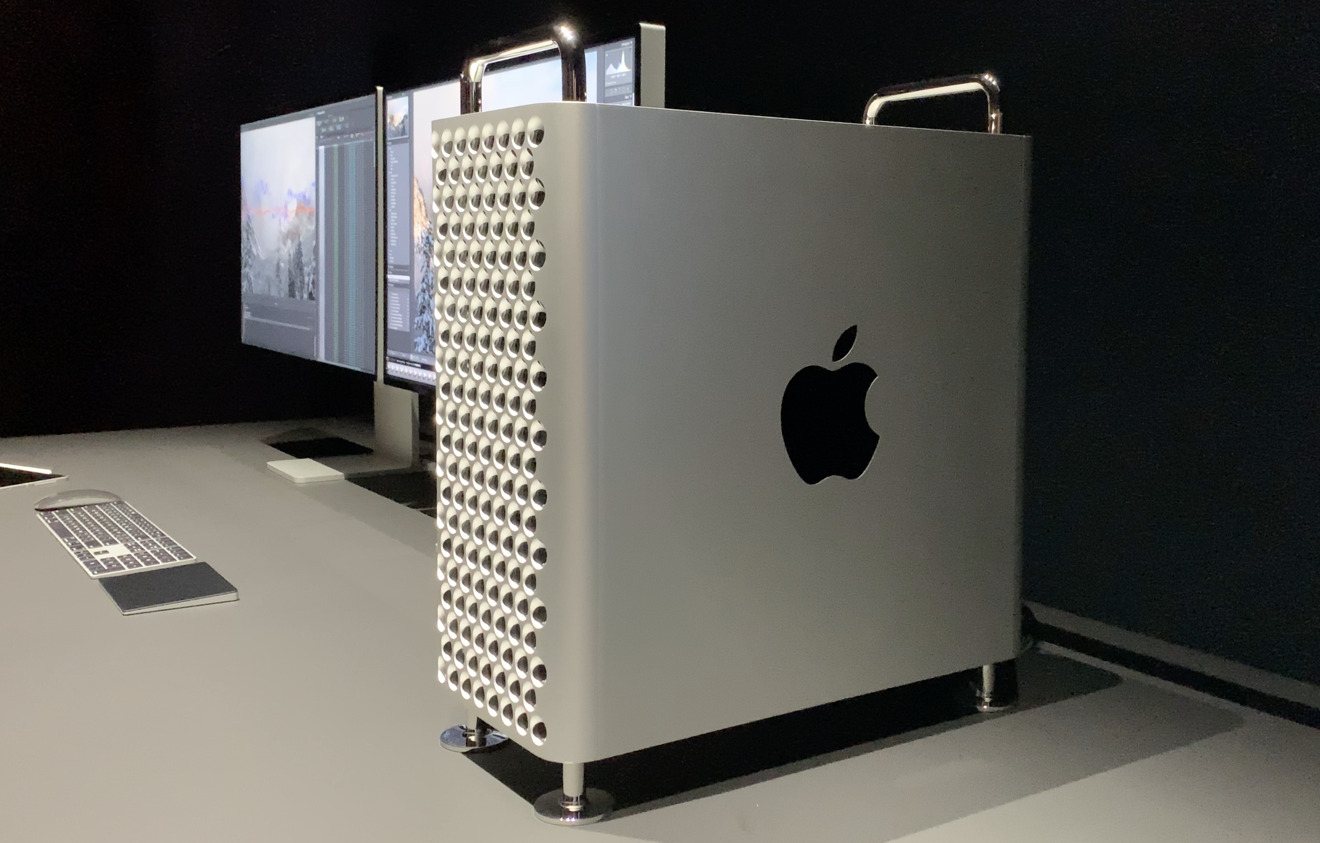

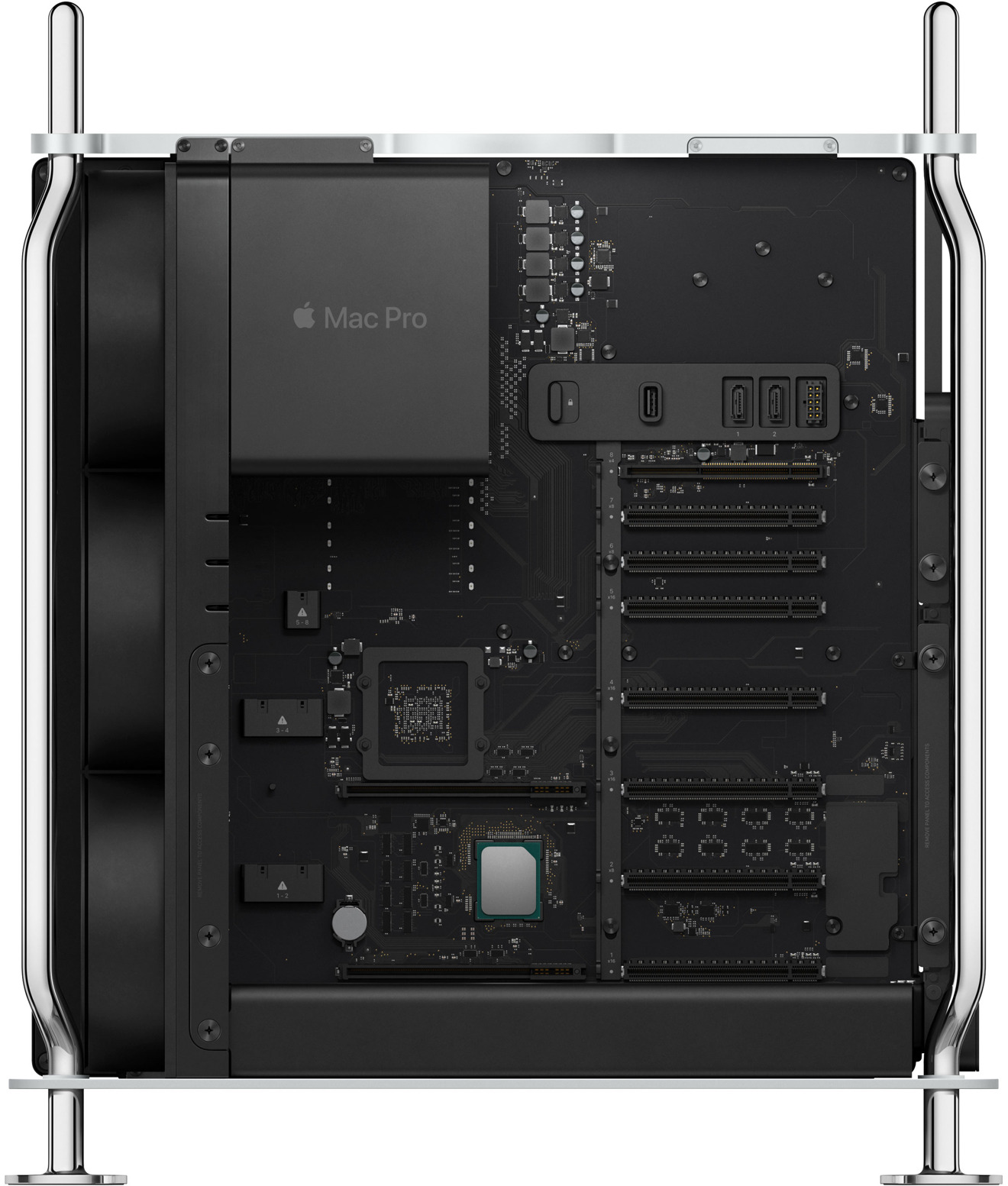
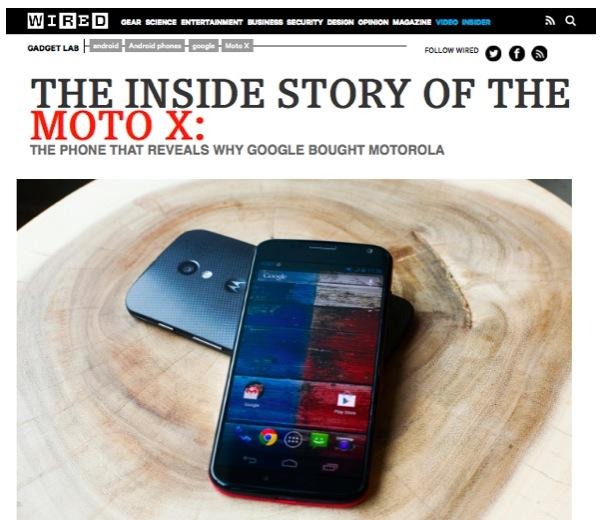
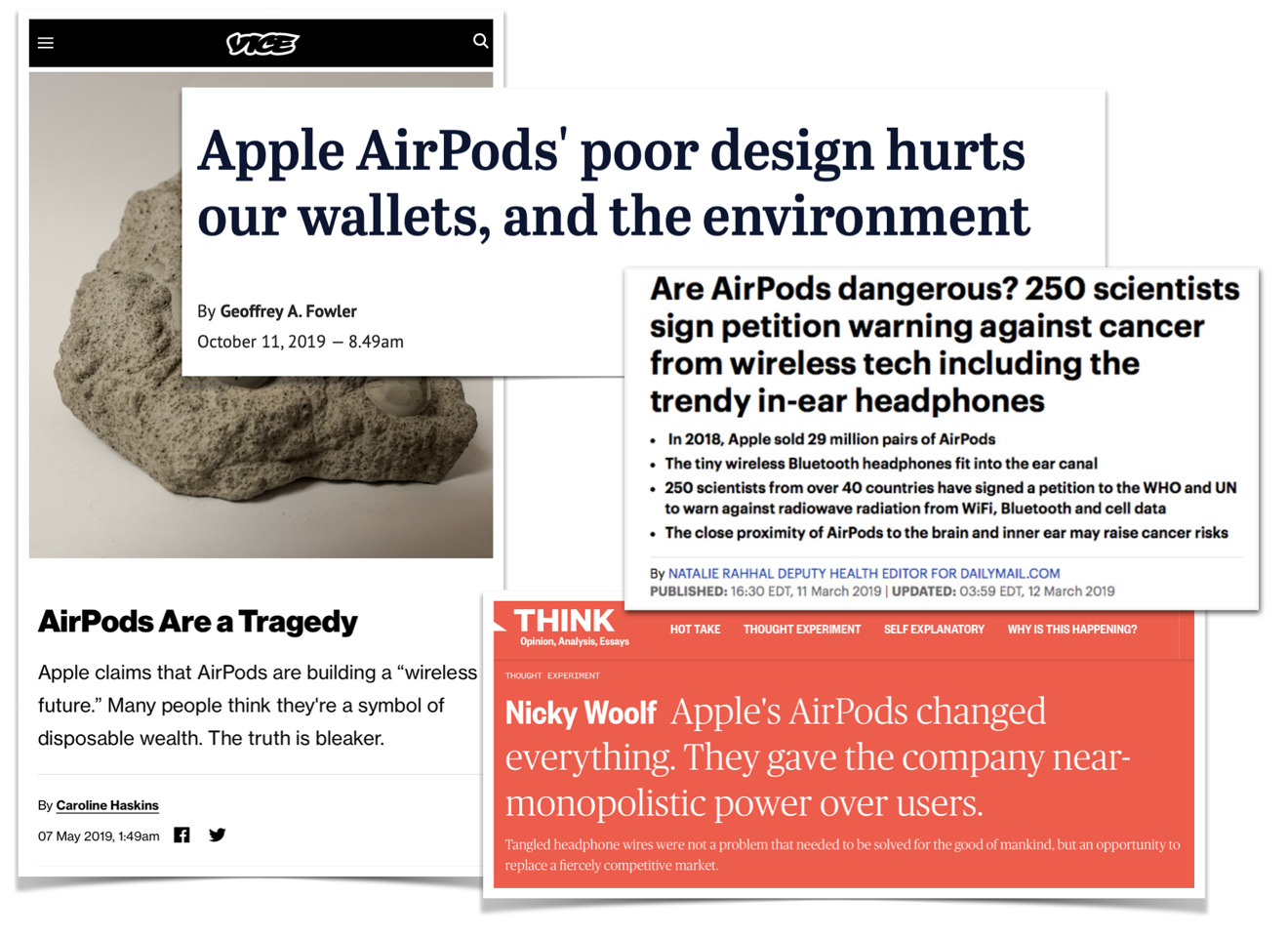


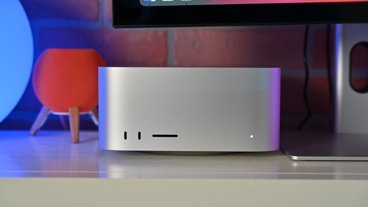





-m.jpg)






 Christine McKee
Christine McKee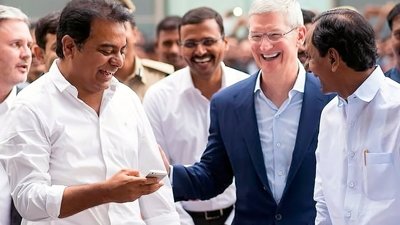
 Malcolm Owen
Malcolm Owen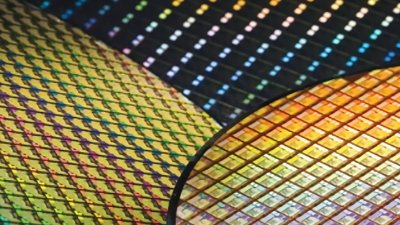
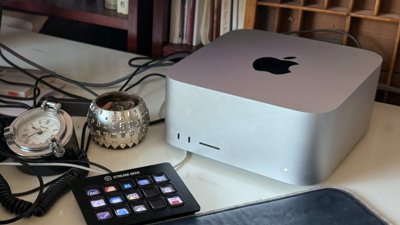
 William Gallagher
William Gallagher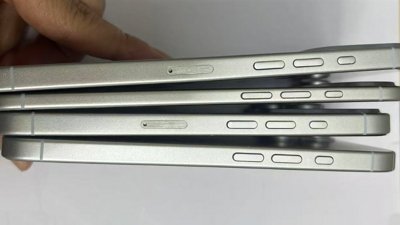
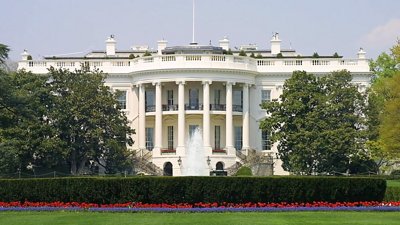

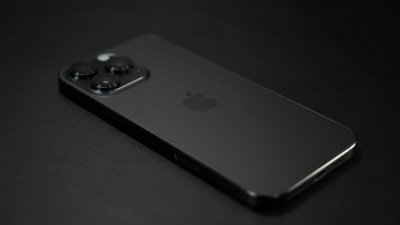
 Wesley Hilliard
Wesley Hilliard



-m.jpg)




29 Comments
LOL... somehow Google and/or their products makes it's way into every DED article whether it's related or not. In this case not. Whaddaboutism at its finest.
Otherwise it's a good article. Nothing is black and white.
This article failed to stress the role Taiwanese manufacturers played in the high tech revolution. They played a vital role in the domination of Windows PC. In fact, in the early days more than 50% of the PCs are made in Taiwan. These players engaged in the cut throat price war, not Dell, HP. In order to be profitable, they thought about ways to save money such as discussed in this article.
"
Before everyone blames Apple for going to China to have things built, look in the mirror and ask yourself whether you have the ability or desire to do it. For many on this forum the answer will be yes but ask your family and friends the same question and I bet the answers will overwhelmingly be NO.DED: what happened to your
This series could be really interesting if the author dropped his defensive whining about Apple coverage in tech media. This article got so bogged down in petty comparisons that it lost the potentially interesting thread of the pros and cons of Apple’s dependency on China. Enough fanboyism, nobody reading Appleinsider.com needs to be schooled on this crap.